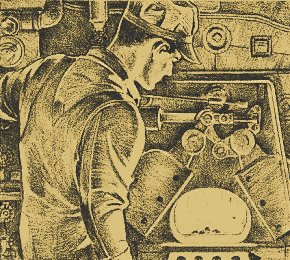|
|
Traffic demands during World War II taxed American railroads to their capacity. Orders for new steam locomotives kept the builders busy. Along with the need for more locomotives came the need for men trained to operate them. Responding to this situation, the Education Department of the State of New York, through its State University system and the Bureau of Industrial and Technical Education, published a Suggested Unit Course in Locomotive Firing. The course was prepared by curriculum writers at Seneca Vocational High School in Buffalo, and was issued from Albany in 1944. I found this 152-page, spiral bound course in the railroadiana collection of my father, Dr. R. D. Leonard. Evidently a railroader friend had given it to him. It makes interesting reading for all steam locomotive fans. Though the job of the "engineman" may seem more glamorous, it is the fireman who must understand and work all the steam-producing features and appliances of the modern steam locomotive. The book contains abundant description, with drawings, of these features and appliances and the valves, levers and gages used to control them. The course was evidently designed with firemen for the New York Central System mostly in mind. The preface acknowledges that the practices described are based on those in use on the New York Central, and the "modern steam locomotive" illustrated in the book is the NYC's class L-4b 4-8-2 which was new in 1944. Some of the features described, such as ash-pan flushers and water scoops, were found on relatively few locomotives. The book has been scanned as JPG images. This produced the best result with the smallest file size. (Attempts to reproduce it in PDF format were not as successful.) Navigate through it by clicking the buttons on each page, or by clicking on a topic on the two pages for the Table of Contents. Those pages are mapped images that link to all parts of the book. As an alternative, select a topic from the list below. Dr. Richard Leonard
|
||

